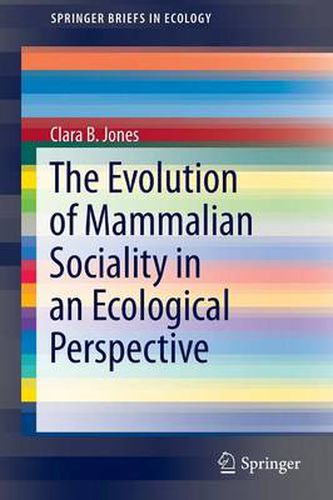Readings Newsletter
Become a Readings Member to make your shopping experience even easier.
Sign in or sign up for free!
You’re not far away from qualifying for FREE standard shipping within Australia
You’ve qualified for FREE standard shipping within Australia
The cart is loading…






This title is printed to order. This book may have been self-published. If so, we cannot guarantee the quality of the content. In the main most books will have gone through the editing process however some may not. We therefore suggest that you be aware of this before ordering this book. If in doubt check either the author or publisher’s details as we are unable to accept any returns unless they are faulty. Please contact us if you have any questions.
This brief discusses factors associated with group formation, group maintenance, group population structure, and other events and processes (e.g., physiology, behavior) related to mammalian social evolution. Within- and between-lineages, features of prehistoric and extant social mammals, patterns and linkages are discussed as components of a possible social tool-kit .
Top-down (predators to nutrients), as well as bottom-up (nutrients to predators) effects are assessed. The present synthesis also emphasizes outcomes of Hebbian (synaptic) decisions on Malthusian parameters (growth rates of populations) and their consequences for (shifting) mean fitnesses of populations. Ecology and evolution (EcoEvo) are connected via the organism’s norms of reaction (genotype x environment interactions; life-history tradeoffs of reproduction, survival, and growth) exposed to selection, with the success of genotypes influenced by intensities of selection as well as neutral (e.g. mutation rates) and stochastic effects. At every turn, life history trajectories are assumed to arise from decisions made by types responding to competition for limiting resources constrained by Hamilton’s rule (inclusive fitness operations).
$9.00 standard shipping within Australia
FREE standard shipping within Australia for orders over $100.00
Express & International shipping calculated at checkout
This title is printed to order. This book may have been self-published. If so, we cannot guarantee the quality of the content. In the main most books will have gone through the editing process however some may not. We therefore suggest that you be aware of this before ordering this book. If in doubt check either the author or publisher’s details as we are unable to accept any returns unless they are faulty. Please contact us if you have any questions.
This brief discusses factors associated with group formation, group maintenance, group population structure, and other events and processes (e.g., physiology, behavior) related to mammalian social evolution. Within- and between-lineages, features of prehistoric and extant social mammals, patterns and linkages are discussed as components of a possible social tool-kit .
Top-down (predators to nutrients), as well as bottom-up (nutrients to predators) effects are assessed. The present synthesis also emphasizes outcomes of Hebbian (synaptic) decisions on Malthusian parameters (growth rates of populations) and their consequences for (shifting) mean fitnesses of populations. Ecology and evolution (EcoEvo) are connected via the organism’s norms of reaction (genotype x environment interactions; life-history tradeoffs of reproduction, survival, and growth) exposed to selection, with the success of genotypes influenced by intensities of selection as well as neutral (e.g. mutation rates) and stochastic effects. At every turn, life history trajectories are assumed to arise from decisions made by types responding to competition for limiting resources constrained by Hamilton’s rule (inclusive fitness operations).